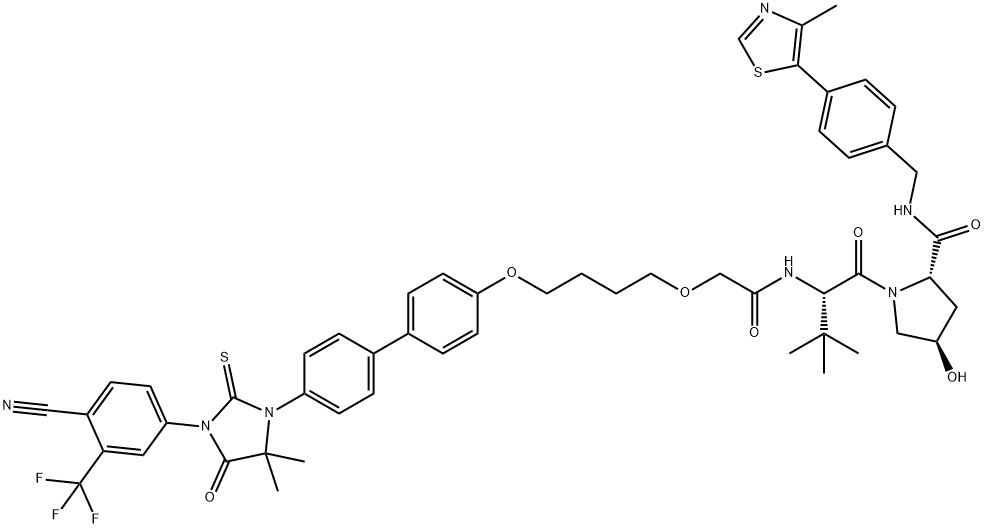(4R)??-N-??[2-??[4-??[[4'-??[3-??[4-??Cyano-??3-??(trifluoromethyl)??phenyl]??-??5,??5-??dimethyl-??4-??oxo-??2-??thioxo-??1-??imidazolidinyl]??[1,??1'-??biphenyl]??-??4-??yl]??oxy]??butoxy]??acetyl]??-??3-??methyl-??L-??valyl-??4-??hydroxy-??N-??[[4-??(4-??methyl-??5-??thiazolyl)??phenyl]??methyl]??-??(L)-??prolinamide is required for the targeted degradation of the androgen receptor.
ARCC-4 is a low-nanomolar androgen receptor (AR) degrader based on PROTAC, with a DC50 of 5 nM. ARCC-4 is an enzalutamide-based von Hippel-Lindau (VHL)-recruiting AR PROTAC and outperforms enzalutamide. ARCC-4 effectively degrades clinically relevant AR mutants associated with antiandrogen therapy[1].
ARCC-4 induces apoptosis and inhibiting proliferation of AR-amplified prostate cancer cells[1].ARCC-4 enhances protein-protein interactions between AR and VHL, thereby promoting the association of the trimeric complex[1].ARCC-4 (0.1-10,000 nM; 20 hours) potently degrades AR with a D50 of 5 nM and Dmax of over 95%[1].ARCC-4 (100 nM; 12 hours) shows near complete AR degradation (>98%) in prostate cancer cells[1]. ARCC-4 selectively degrades AR via the proteasome but not PR-A or PR-B suppression[1].ARCC-4 shows efficacy against clinically relevant AR mutations[1].ARCC-4 maintains activity despite elevated androgen levels[1]. Western Blot Analysis[1] Cell Line: VCaP cells
[1]. Salami J, et al. Androgen receptor degradation by the proteolysis-targeting chimera ARCC-4 outperforms enzalutamide in cellular models of prostate cancer drug resistance. Commun Biol. 2018 Aug 2;1:100.

